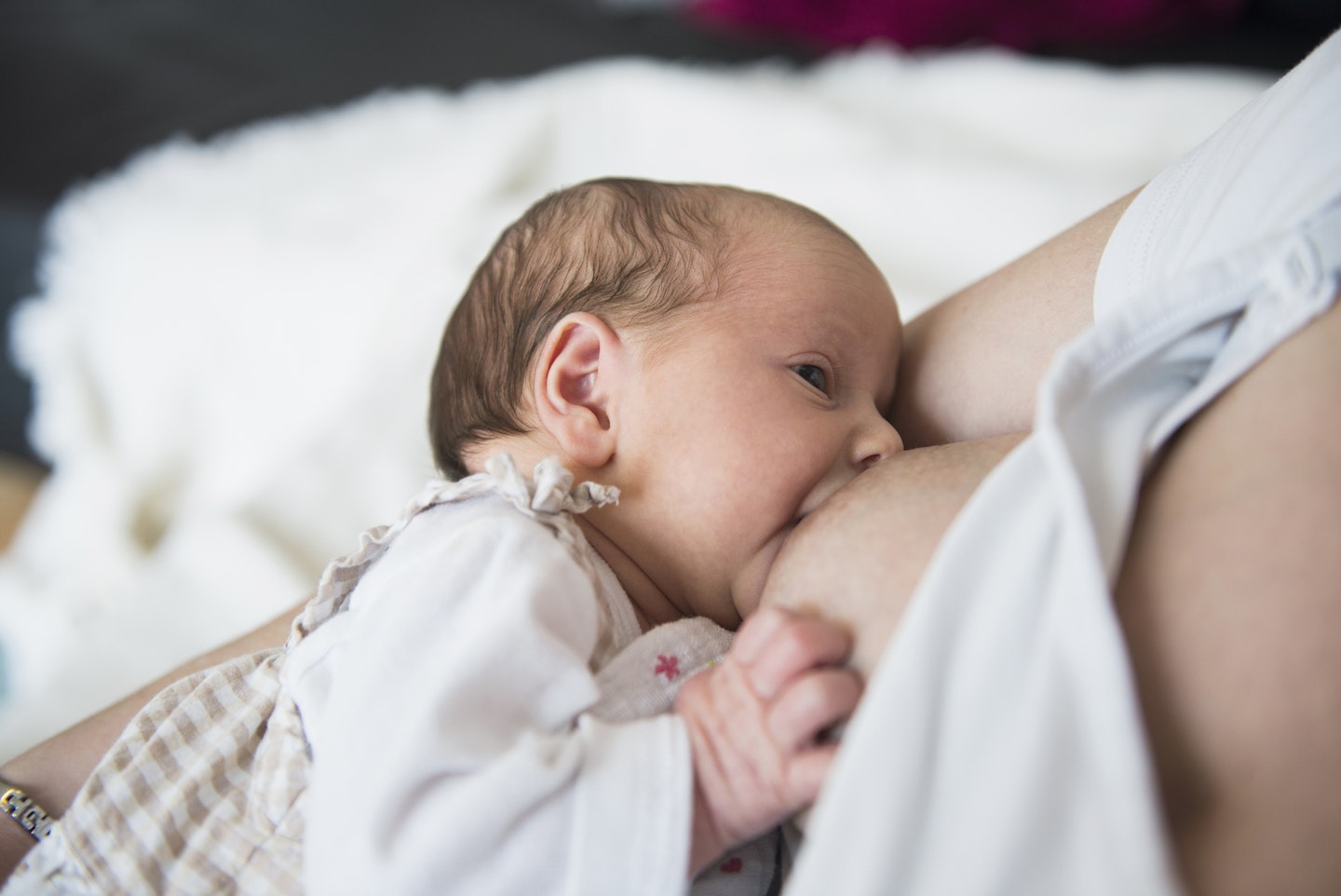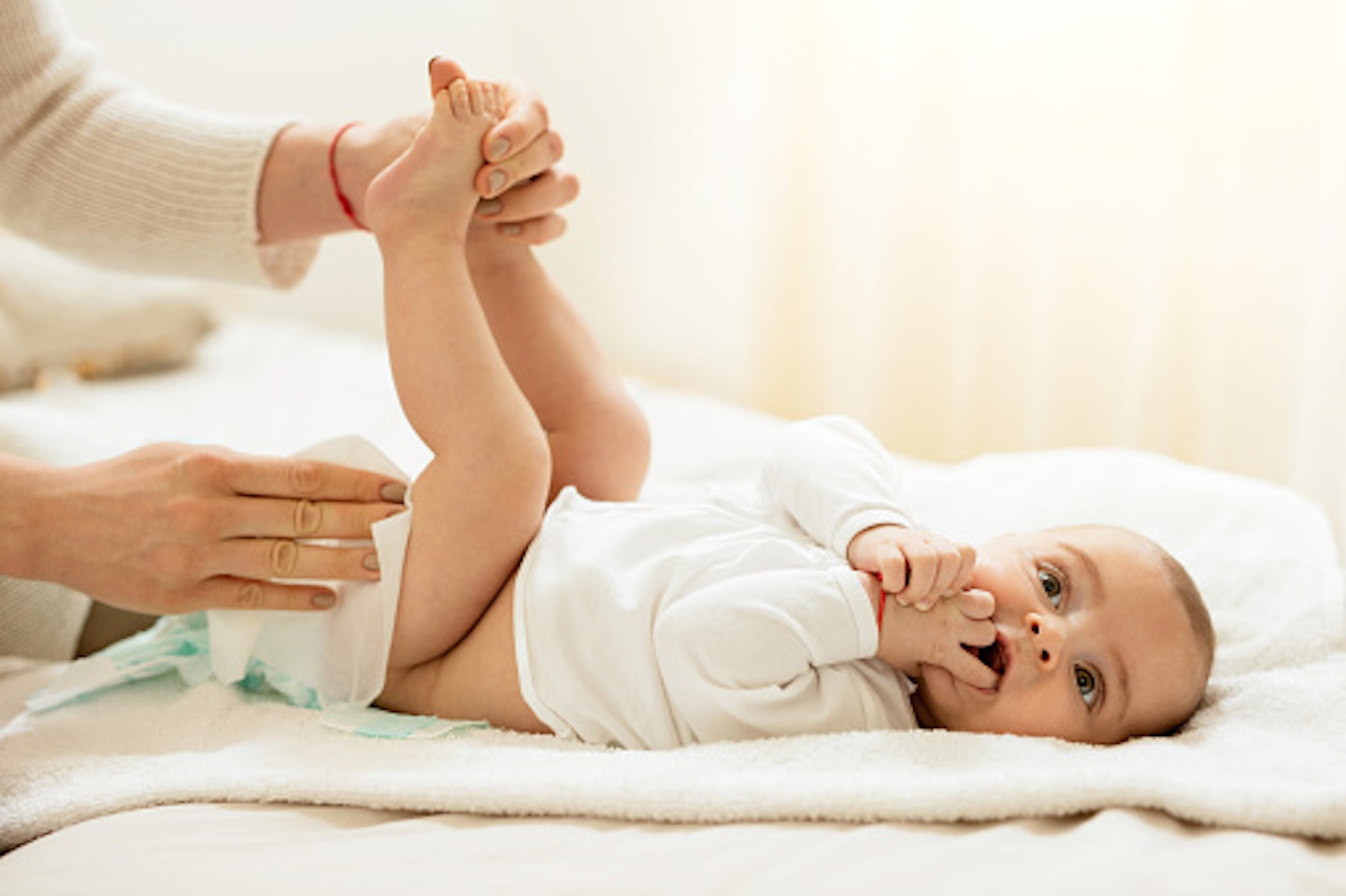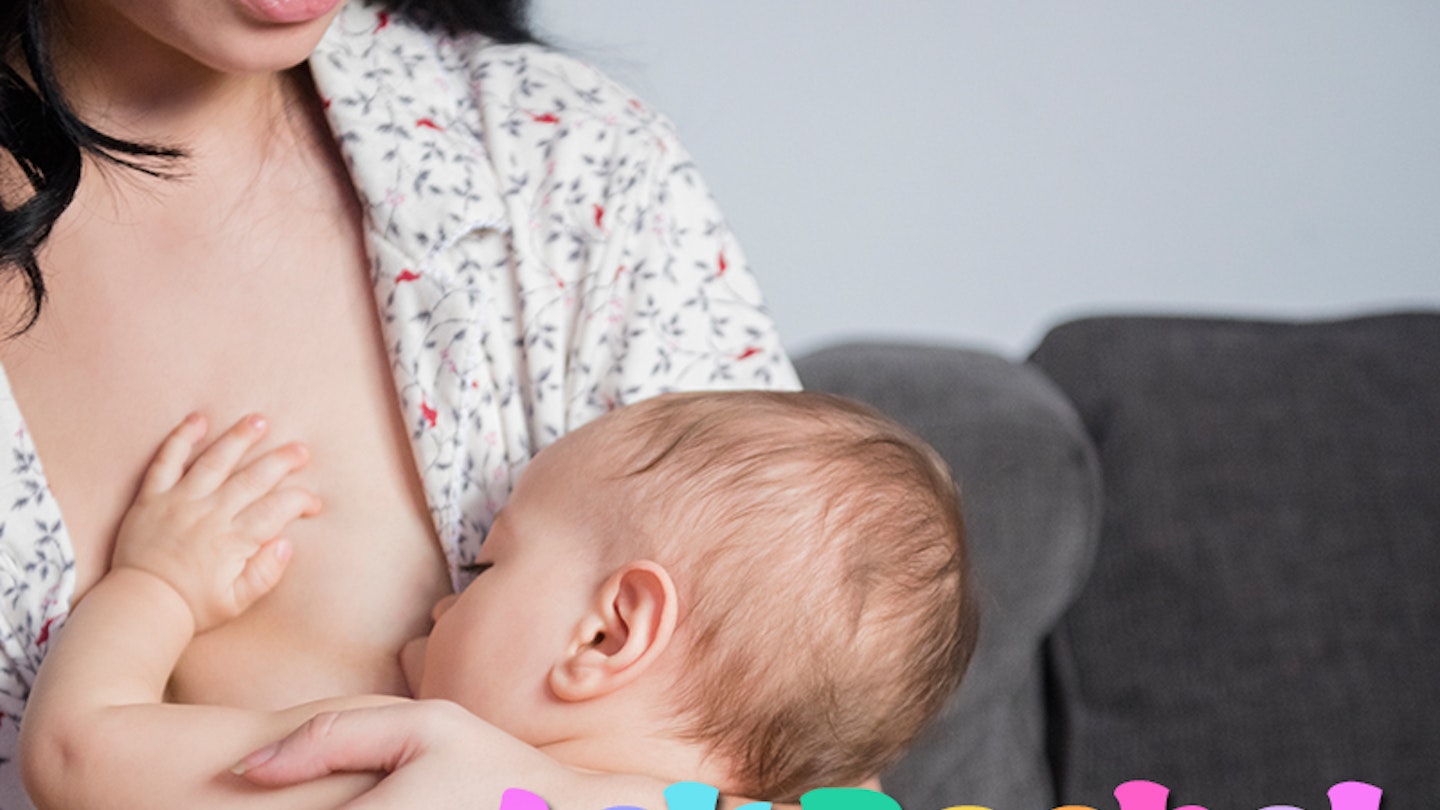How much and how often should I breastfeed my baby? How do I know if they're getting enough milk?
Parenting expert Rachel Fitz-Desorgher is here to help with all your questions around pregnancy, babies and toddlers. This week she answers all your questions around breastfeeding...
It is one of life’s paradoxes that we are told from the moment we conceive that breastfeeding is the most natural thing in the world, and then, no sooner is the placenta out than those same voices start making the business of boobs and babies seem so complicated and nerve-wracking!

We are regaled with the notion of feeding cues, but babies root and shove their fists in their mouths all the time, even when they have literally just come off after a long suckle. We are told that our baby needs to get foremilk and hindmilk in just the right quantities but we can’t see what’s going down and, because baby gives non-stop “feeding cues” we are quickly convinced that, whatever it is we are giving them from our boobs, it clearly isn’t enough.
The biggest part of my job has always been supporting mums to breastfeed confidently, and the best way to do that is to explain to them exactly how babies “work”. Once they understand that babies are highly evolved to do this stuff without their mothers needing to overthink it, mums can relax and start to enjoy their little ones.
Those of you who join me for my monthly M&B Facebook Live sessions regularly tell me that the reassurance they get from finally understanding their baby’s behaviour is a game-changer, allowing them to stop timing and measuring, watching and controlling.
So let’s look at how babies are evolved to ensure that they survive perfectly well, even when their mum feels like she’s trying to feed an angry octopus!
How often should I breastfeed my baby?

For the first 3-4 months of life, babies are highly evolved to be unable to cope for any length of time out of arms. Babies are in a very primitive state, set simply to survive and are actually protected from being able to learn how to cope for long out of arms - after all, if she is out of arms for too long, the bears might get her! So young babies always cry in a way that sounds desperate, and they always look as if they need to get under your T-shirt in a hurry.
The English word is breastfeeding, with the emphasis very unhelpfully on “feeding” which gives rise to endless anxieties about amounts and frequency. But many, many other languages use a term which translates to something more like “soothing” or “suckling”. The German word for breastfeeding is “Stillen” which means “to calm”, and some east European countries use a term more like “to breast a baby”. I use the term “booble” precisely to take out the notion that what the baby is demanding is to be “fed”.
Your baby is actually hard-wired to demand almost constant soothing and for the boob to be the best soother. This is because just being at the boob brings her skin to skin and this actually regulates the breathing, settles the heart rate, steadies the temperature, calms the reflexes, protects against infection AND relaxes the immature and very over-active gut.
Suckling increases these effects but you’ll notice that your baby will spend a lot of the boob time not actually suckling at all. This is just as it has always been and is meant to be - a baby, in arms, face-skin to boob-skin, staying safe and gently soothed. The milk is there and, if she wants a bit, she will take some, and then just lie there and doze for another little while ...
Imagine that it’s a cold, rainy day and you have a good book to read and only a few pounds in your purse. You take refuge in a good coffee shop and sit down in the warm and dry on a comfy sofa with a nice cappuccino. You’ll have a lovely slurp of hot coffee and then pop your mug down, get your book out, lean back with a contented sigh and settle down for a delightful bit of “me-time”. Every now and then you’ll pick up your mug and have another short slurp, but you’re determined not to hurry this coffee - after all, it’s horrid outside. If the waiter comes and tries to take your mug, you’ll put your hand over the top and say, “I’m not finished yet!” You might even hold the warm mug in your hands and close to your mouth for a while without actually drinking but just enjoying the steam and the aroma.
This is how a young baby gets his milk - sure he could take all he needs in 5 minutes flat but that wouldn’t keep him in arms long enough to soothe his breathing, heart rate, temperature, reflexes, protect him against infection or settle his poor, sore gut.
He needs to have just a little bit of milk and then just ... booble. Then a little bit of milk and then just ... booble again! He can suckle and take milk and he can also suckle and choose not to take milk - he is capable of turning the flow on and off and the speed of flow up and down. He’s never had to learn this stuff because it’s all innate, done by reflex and without knowledge. You’re not meant to know how much he’s taking.
If you knew, you might try to control it and no-one should try to control another being’s intake. In fact, controlling a baby’s milk intake can actually affect the very sensitive part of the brain which manages appetite and makes it difficult when he grows up for him to know when he is full. This can lead to over-eating and obesity and might be one of the reasons why bottle-fed babies are at an increased risk of obesity in later life. By contrast, because a baby at the breast can turn the flow of milk on and off, and, because mum’s milk is perfectly evolved to be very thin, it is extra-easy for your baby to sick back any excess. This is why you really cannot overfeed the boobled baby. He will keep down just the right amount and dramatically chuck back “excess-to-requirements”.
So, if he has guzzled frantically in a bid to soothe his crampy tummy in the evening (mum’s milk has gut-calming hormones in it for those really sore evenings - how amazing!) when he comes off, have a cloth handy and be ready to mop-up.

So, when your baby is out of arms, expect him to become unsettled before long and to start to root and cry. He isn’t saying “feed me” but “soothe me” and babies are evolved to soothe best at the boob. If he’d rather be soothed in a non-boob way, he’ll soon let you know, but it is never wrong to see if he does wants to booble first, before you try other soothing tricks. Then, once he is snuggled safely in, watch the TV not the clock; talk to a friend; read a book; knit or even change a nappy! Just try not to analyse what your baby is doing - you simply will be guessing, and making yourself anxious to boot.
Your baby will suckle, booble and, sometimes, drink and, when she does take milk, her strange head-bobbing antics and fidgeting is her highly-evolved way of ensuring that she gets just the right amounts of fore and hind milk that she needs this time around (it’s going to change each time so don’t try to analyse that either). Eventually, sometimes after a short time and often after a very long time, she will come off the boob and doze for a little while.
Give her a snuggle over your should for 10-15 minutes (long enough for her brain to know that milk has gone down and to work out if more is needed), then change her nappy before settling down and offering the other boob. She may or may not want the second side, and if she does, she will suckle, drink, booble, doze again before coming off for a short while before wanting to booble all over again.
Avoid apps that promise to tell you how long and how efficiently your little one has fed - they really do more harm than good by tricking you into thinking you should have control of your baby’s behaviour. There is absolutely no way of knowing how many minutes of a baby’s time at the breast is milk-taking time and, in any case, remember that she behaves at the boob like you do in that coffee shop and that is how it is supposed to be. You can’t cure a baby of being a baby, it is miserable for everyone if you try and ... you will fail!
This doesn’t sound like how baby books and friends tell you to breastfeed, but this is actually how babies do it and they are highly evolved over millions of years to do this stuff so you can trust them to get on with it without you needing to interfere. In fact, the more you accept that, because your baby doesn’t think about how to booble but just does it by reflex, he can’t get it wrong. Anymore than he can sneeze wrong.
How do I know if my baby is getting enough milk?

So, if watching and timing and listening for gulping in pointless and counter-productive, how do you know that all is well and that your little one is getting enough milk during his endless and frequent booblings?
Simply check those nappies. If your baby is having plenty of really wet nappies (6 or so a day) and seems alert, active and settles when allowed to stay safe in arms, then he is taking milk. After all, your baby can’t make wee out of fresh air! If you take your baby to be weighed, remember that, in order to get accuracy, he should go onto scales that have been set down on a hard, firm and flat surface (never a carpet or wobbly table), he should be naked and, most important of all, he should go onto the scales immediately after a full feed (boob, nappy change, boob). If you don’t get him weighed correctly you might get wonky data and end up unnecessarily worried. If your baby is being weighed properly and isn’t gaining weight, find an infant feeding specialist who can see what might be going on. Usually, it is something very simple which can be overcome quickly and easily so try not to worry.

So you see, the answer to “how often should my baby feed, how long should he feed for, and how much should he take?” is this: forget about feeding and just offer to booble whenever your baby roots or cries. Your highly-evolved and self-regulating baby will decide how often, how long and how much, and that is exactly how it should be.
And ... if you don’t know how to knit or change a nappy whilst you have your baby on your boob, join me for my next M&B Facebook Live session (look out for the reminders) and ask me. I promise it’s easy and I’ll show you how!
Make sure you're following Mother & Baby on Instagram for relatable memes, inspiring stories and parenting hacks!
Join the club! Introducing our brand, spankin’ new Facebook group called #mumtribe.Simply search ‘#mumtribe’ into the search bar and meet like-minded mums, win gorgeous goodies and have some fun!
For parenting tips, tricks and advice you can trust, click here to download a free digital issue of Mother and Baby magazine.
